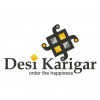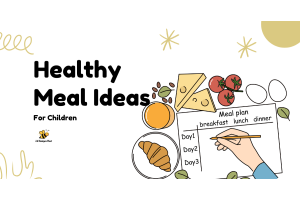Nutritious Lunch Ideas for Kids (Nutrition Week Special)

Nutrition week is the perfect time to rethink what goes into your child’s lunch box. Good lunches fuel their learning, mood, and energy. This guide gives you practical lunch ideas, lunch ideas Indian style, and kid-tested lunch recipes for kids that are simple to make and full of nutrients. You will also find a chilla recipe and many more nutritious recipes that are kid-friendly for everyday packing.
I know busy mornings make packing a healthy kid's lunch box feel like a challenge. That is why these lunch ideas focus on quick preparation, balanced nutrition, and flavors kids love. Whether you want lunch ideas, Indian or global twists, you will find options that are easy, tasty, and packed with the nutrients growing bodies need.
Why a nutritious lunch matters
A balanced lunch helps kids concentrate in class, keeps their energy stable, and supports steady growth. Meals that combine protein, whole grains, healthy fats, fruits, and vegetables help prevent sugar crashes and overeating later. Nutritious recipes teach children the habit of eating well and make Nutrition Week meaningful rather than just a poster on the wall.
A good lunch also models healthy choices. When parents change the lunch box, kids pick up on what real meals look and feel like. Use this chance to introduce new flavors and textures. Make it fun, not a battle.
The building blocks of a healthy kids' lunch box
Aim for variety and balance. Use this simple plate as a checklist:
-
Protein: eggs, paneer, cooked lentils, chicken, fish, tofu, Greek yogurt, or nut butters.
-
Whole grains and starchy vegetables: brown rice, whole wheat roti, quinoa, millets, whole grain bread, or sweet potato.
-
Vegetables: raw sticks, cooked veg, or a small salad. Try different colors each week.
-
Fruit: whole fruit or cut pieces that hold up well in a lunch box.
-
Healthy fats: avocado, seeds, nuts, or a drizzle of olive oil.
-
Hydration: water, coconut water, or milk. Avoid sugary drinks.
This mix keeps meals satisfying and provides vitamins, minerals, fiber, and steady energy.
Practical tips before you pack
-
Plan one evening before. Lay out ingredients or pre-cook something for the next day.
-
Use insulated lunch boxes. Hot foods stay warm and perishables stay safe longer.
-
Portion smartly. Young kids need smaller portions. Use small containers.
-
Add a familiar item. Pair something new with a favorite to increase acceptance.
-
Avoid overly sweet or salty snacks. Choose whole foods instead of packaged items.
-
Make it colorful. Colorful plates feel more exciting to kids.
-
Involve your child. Let them pick between two options. Kids eat more if they help choose.
Quick, balanced lunch ideas (ready in 15–30 minutes)
These ideas are practical and can be mixed and matched. They work well for school or day trips.
-
Veg pulao with raita and fruit
Cook brown rice or mixed grain pulao with peas, carrots, and mild spices. Pair with cucumber raita and a banana. Easy to pack and mild in taste. -
Whole wheat sandwich with egg or paneer
Use whole-grain bread, mashed boiled egg or crumbled paneer, a thin spread of avocado, and cucumber slices. Cut into fun shapes. -
Mini chapati roll with chicken or paneer and salad
Spread hummus or curd on chapati, add shredded cooked chicken or paneer, grated carrot, and roll. Secure with a small pick. -
Chilla with vegetable filling (chilla recipe below)
Chillas are savory pancakes made from gram flour or mixed lentil batter. Fill with paneer or veggies for a protein boost. -
Quinoa salad with roasted veggies and chickpeas
Roast small veg pieces, toss with cooked quinoa and boiled chickpeas. Add a squeeze of lemon and a little olive oil. -
Masala oats with sautéed vegetables
Cook oats with mixed veg and a touch of mild spices. It’s warm, filling, and different from regular breakfast oats. -
Idli or dhokla with a side of chutney and fruit
Soft idlis or dhoklas are light and easy to eat. Add a protein cup like curd or a boiled egg. -
Pasta with hidden veg tomato sauce and shredded cheese
Make a tomato sauce with pureed carrots and bell peppers. Toss with pasta and a bit of cheese. -
Rice and dal with carrot salad
A simple home-style lunch: soft dal, brown or white rice, and grated carrot with lemon. -
Wrap with hummus, cucumber, and falafel
Use a small wrap or roti, spread hummus, add cucumber, and baked falafel. Great finger food.
Chilla recipe (easy and kid-friendly)
Chilla is perfect for lunch boxes. It can be made from chickpea flour or mixed lentils and packed with hidden vegetables.
Ingredients (for 4 chillas):
-
1 cup besan (gram flour) or 3/4 cup mixed moong and toor dal batter (soaked and ground)
-
1 small carrot, grated
-
1 small onion, finely chopped (optional)
-
1 small tomato, finely chopped (optional)
-
A handful of spinach, finely chopped
-
1 green chili, finely chopped (optional, keep mild for kids)
-
1/2 tsp cumin powder
-
Salt to taste
-
Water to make a pouring batter
-
A little oil for the pan
Method:
-
Mix the flour with a little water to form a smooth batter, similar to pancake batter.
-
Add grated carrot, chopped spinach, onion, tomato, cumin powder, and salt. Stir well.
-
Heat a non-stick pan and lightly grease it. Pour a ladle of batter and spread gently. Cook on medium heat until the bottom is set. Flip and cook the other side.
-
Make 3–4 chillas from this batter. Serve with chutney or curd. For lunch boxes, cool and fold; add a small container of yogurt or chutney.
Chillas are flexible. Add grated paneer or mashed boiled potato to change the texture. They stay good at room temperature for a few hours when packed in insulated boxes.
Five full sample lunch menus (easy to follow)
These five menus are balanced and repeatable. Rotate them over two weeks for variety.
Menu 1
-
Vegetable chilla (2 pieces)
-
Small cup of curd or raita
-
Apple slices
Menu 2
-
Whole-grain sandwich with mashed egg and spinach
-
Baby carrot sticks
-
A small box of grapes
Menu 3
-
Brown rice with mild dal and a few roasted peanuts
-
Sliced cucumber and tomato
-
A small mango slice (seasonal)
Menu 4
-
Mini chapati roll with paneer and grated carrot
-
Roasted sweet potato cubes
-
A boiled egg (if allowed)
Menu 5
-
Quinoa salad with peas and corn
-
A piece of fruit like an orange or a pear
-
A few roasted seeds (sunflower or pumpkin)
Nutritious recipes that travel well
Not every lunch needs to be hot. These options keep their texture and taste after a short wait.
-
Baked samosa with veg filling. Use whole wheat pastry and bake. Pack with a mild chutney.
-
Mini frittatas or egg muffins. Bake eggs with bits of veggies in muffin tins. Portable and protein-rich.
-
Paneer tikka cubes. Marinate paneer and roast. Good cold or at room temperature.
-
Couscous salad with beans. Quick to cook and holds well.
-
Dosa roll with potato and spinach. Dosa can be rolled tightly and stays fine for a few hours.
Packing and presentation tips kids love
-
Use small compartments to separate items.
-
Include a small note or sticker. A short “Good luck!” goes a long way.
-
Cut fruits into bite-sized pieces for easy eating.
-
Use cookie cutters to shape sandwiches or chapatis.
-
Add a dipping sauce to a small leak-proof container. Kids enjoy dipping their snacks.
Handling picky eaters
-
Offer choices, not orders. “Do you want carrot sticks or cucumber today?”
-
Pair a new item with a safe favorite. If they love cheese, add cheese cubes.
-
Keep trying. It takes many exposures to accept a new food.
-
Avoid pressure. Force makes kids resist more.
-
Make small changes. Grate vegetables into parathas or chillas so the texture is less obvious.
Time-saving hacks for busy parents
-
Batch cook on weekends. Make chillas, oats muffins, and frozen paratha pockets.
-
Freeze portions. Freeze a portion of dal or curry and thaw overnight.
-
Use leftovers creatively. Yesterday’s roti can be rolled up with a new filling.
-
Use multi-purpose appliances. Pressure cookers, air fryers, and slow cookers save time.
-
Prep toppings and snacks. Wash and chop fruits and vegetables in advance.
Food safety and storage
-
Pack perishable items in an insulated container with an ice pack if refrigeration is not available.
-
Keep raw fruits and cooked foods separate.
-
Use clean utensils and wash your hands before packing.
-
If your child’s school has strict allergy rules, avoid nuts and write safe ingredient lists.
Healthy treats and occasional extras
It is okay to include a small treat once in a while. Choose treats with some nutritional value.
-
Homemade banana bread slice
-
Dark chocolate square (small)
-
Baked banana muffin with oats
-
Coconut ladoo made with jaggery in small amounts
These are special treats, not everyday items. Pair them with protein to reduce a sugar rush.
Grocery list to keep stocked
To make packing easier, keep these basics at home:
-
Whole wheat flour, besan, oats, millets, quinoa
-
Brown rice or parboiled rice
-
Eggs, paneer, tofu, chicken (if non-veg)
-
Canned beans or dried pulses
-
Fresh fruits and seasonal vegetables
-
Yogurt, hummus, and nut butters (if allowed)
-
Seeds and nuts for snacking
-
Small reusable containers and an insulated lunch box
Involve kids in meal planning
Kids respond well when they feel in control. Here are quick ways to include them:
-
Let them choose between two lunch options.
-
Give them a mini shopping list and a task at the store.
-
Allow them to arrange their lunch box.
-
Teach them a simple recipe, like a fruit yogurt cup or a wrap.
This builds life skills and reduces lunchtime refusal.
Adapting to allergies and dietary needs
-
For nut allergies, replace peanut butter with sunflower seed butter or yogurt.
-
For lactose intolerance, use dairy-free alternatives like almond yogurt or tofu.
-
For gluten-free needs, choose millet rotis, rice, or quinoa-based dishes.
-
For picky plant-based eaters, add beans, tofu, or soya chunks for protein.
Always check ingredient labels and communicate with school staff.
How to make Nutrition Week special
Use Nutrition Week as a learning moment. Create a small lunch challenge where each day highlights a food group. Celebrate participation with a fun sticker chart. Teach kids about colors of food and why each color matters. Make small, achievable goals like “try one green bite” and celebrate success.
Simple, steady changes win
Packing a healthy kids lunch box does not require perfect recipes or hours in the kitchen. Small, steady changes like adding a vegetable to a sandwich, swapping refined bread for whole grain, or including a protein like egg or paneer will make a big difference over time. Keep experimenting, involve your child, and use Nutrition Week to try new nutritious recipes. When food is tasty, colorful, and simple, kids will eat well and learn healthy habits that last.
If you want, I can give you a printable weekly menu, shopping list, or quick 10-minute recipes tailored to your child’s age and preferences. Just tell me if your child has any food restrictions or favorite flavors, and I will make a ready-to-use plan.




























